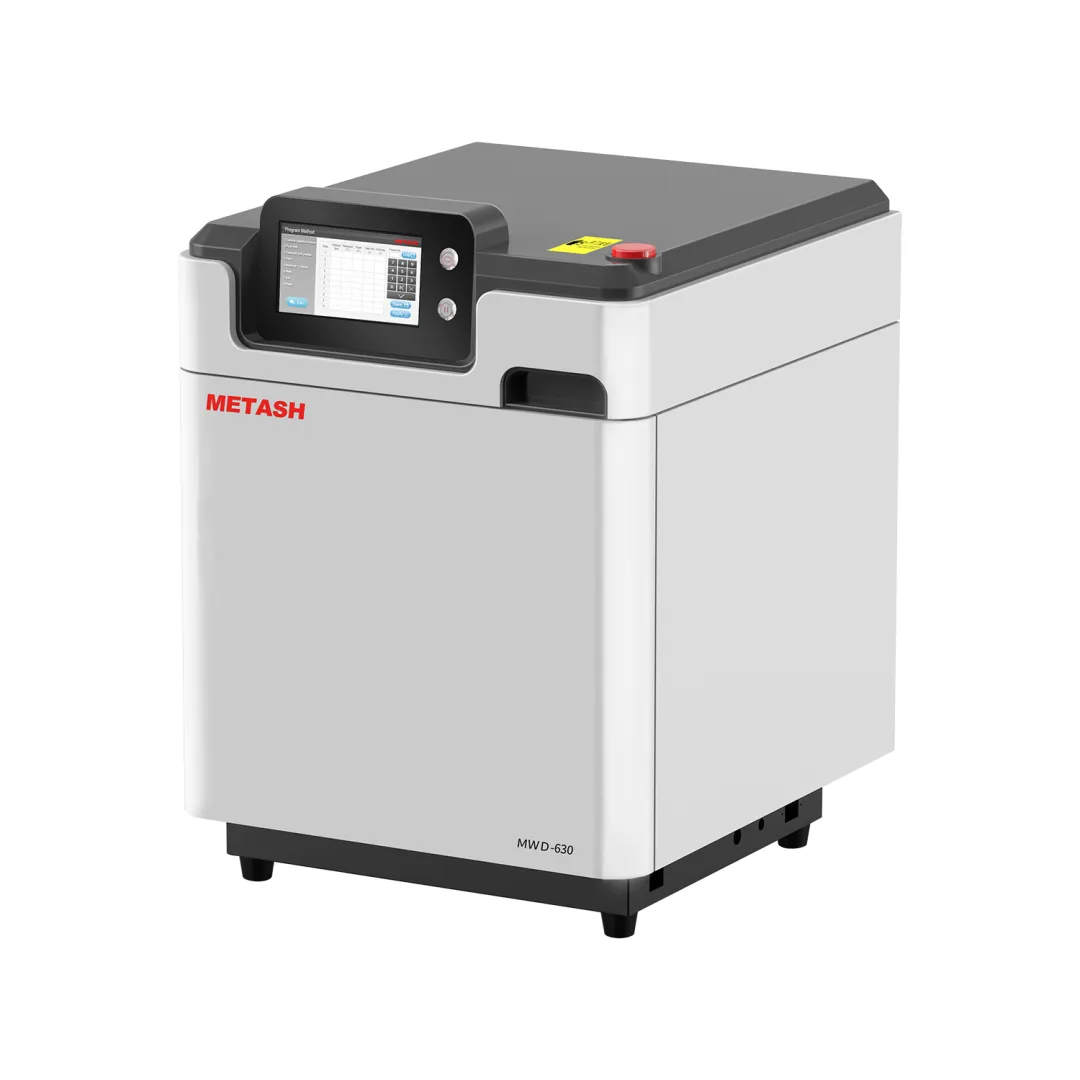Carbon nanotubes (CNTs) have garnered significant attention in the scientific and industrial communities due to their exceptional mechanical, electrical, and chemical properties. These one-dimensional quantum materials exhibit tensile strengths up to 50–200 GPa, which is 100 times stronger than steel, while having a density only one-sixth that of steel. Their Young' s modulus can reach 1 TPa, comparable to that of diamond and five times that of steel. Moreover, CNTs possess excellent flexibility and electrical conductivity, making them highly promising for a wide range of applications.
However, during the synthesis of carbon nanotubes, impurities are inevitably introduced, which can significantly influence their performance and limit their practical applications. Therefore, accurate determination of impurity content in CNTs is crucial. In this blog post, METASH, as high quality laboratory analysis equipment exporter, will share the analysis of impurities in carbon nanotubes using high performance microwave digestion system for sale.
Instruments and Reagents
Instruments
- Shanghai Metash microwave digestion system, which is designed to provide precise control over the digestion process, ensuring uniform heating and efficient breakdown of the sample matrix.
- An SPH-1 acid evaporation instrument, used to remove excess acid after the digestion process, leaving behind a residue that can be further analyzed.
- An analytical balance with a precision of one ten-thousandth, essential for accurately weighing the carbon nanotube samples to ensure reliable experimental results.
- A pipette, used for precise measurement and transfer of reagents during the experiment.
Reagents
- High-purity nitric acid (GR grade), which serves as a strong oxidizing agent, helping to break down the carbon structure and dissolve impurities.
- High-purity hydrofluoric acid (GR grade), known for its ability to dissolve silicon-based compounds and other inorganic impurities that may be present in carbon nanotubes.
- High-purity sulfuric acid (GR grade), which enhances the oxidation process and aids in the complete digestion of the sample.

Experimental Method
Sample Weighing
Accurately weigh 0.0500 g (±0.001 g) of carbon nanotube sample and place it into the inner vessel of the digestion can. This precise amount is chosen to ensure that the sample can be completely digested under the given conditions while avoiding excessive reagent usage.
Pre-digestion
Add 4 mL of nitric acid, 4 mL of hydrofluoric acid, and 3 mL of sulfuric acid to the sample. Cover the inner vessel and let it stand for 10 minutes. This step allows the acids to penetrate the sample and initiate the breakdown of the carbon nanotube structure and impurities.
Pre-digestion at Elevated Temperature
Place the inner vessel containing the sample and acids onto the acid evaporation instrument and heat it at 120°C for 20 minutes. This pre-digestion step helps to partially break down the sample, making it more amenable to the subsequent microwave digestion process.
Microwave Digestion
After cooling the pre-digested sample to room temperature, place it in the microwave digestion system and follow the temperature program shown in Table 1. The microwave digestion process utilizes the high-frequency electromagnetic field to generate heat rapidly and uniformly within the sample, ensuring efficient and complete digestion of the carbon nanotubes and their associated impurities.
Acid Evaporation
Once the digestion is complete, use the acid evaporation instrument to evaporate the acid at 160°C until the volume of the liquid in the can is reduced to the size of a soybean. This step removes excess acid, leaving behind a residue that contains the dissolved impurities, which can then be analyzed using appropriate analytical techniques such as inductively coupled plasma mass spectrometry (ICP-MS) or atomic absorption spectroscopy (AAS).
Digestion Results and Discussion
Digestion Results
The final digestion solution appears colorless and transparent, indicating that the carbon nanotubes have been completely digested and the impurities have been dissolved in the acid solution. This result is essential for accurate analysis of the impurity content, as any undigested material could interfere with subsequent analytical procedures.
Discussion
1. Effect of Maximum Temperature: The maximum temperature during the digestion process has a significant impact on the digestion efficiency. When the maximum temperature is set at 210°C, a small portion of the carbon nanotubes remains undigested. However, increasing the maximum temperature to 230°C results in complete digestion of the carbon nanotubes, yielding a clear and transparent solution. This finding underscores the importance of optimizing the digestion temperature to ensure thorough breakdown of the sample.
2. Effect of Sample Weight: The weight of the sample also plays a crucial role in the digestion process. When the sample weight is increased to 0.1000 g, even at a maximum temperature of 230°C, the sample cannot be completely digested. This suggests that there is an optimal sample-to-reagent ratio that must be maintained to achieve effective digestion. Exceeding this ratio can lead to incomplete digestion and inaccurate analysis results.
3. Optimization of Digestion Conditions: Based on the experimental results, it is recommended to carefully adjust the digestion temperature, sample weight, and digestion time to achieve the best digestion effect. Proper optimization of these parameters can enhance the accuracy and reliability of impurity analysis in carbon nanotubes.
In conclusion, microwave digestion is a powerful and efficient method for preparing carbon nanotubes for impurity analysis. By optimizing the digestion conditions, including temperature, sample weight, and reagent volumes, researchers can ensure complete digestion of the carbon nanotubes and accurate determination of impurity content. This method provides valuable insights into the purity of carbon nanotubes, which is essential for their successful application in various fields. Future research may focus on further refining the digestion process and exploring new analytical techniques to enhance the detection and quantification of impurities in carbon nanotubes.
www.metashcorp.com
METASH

